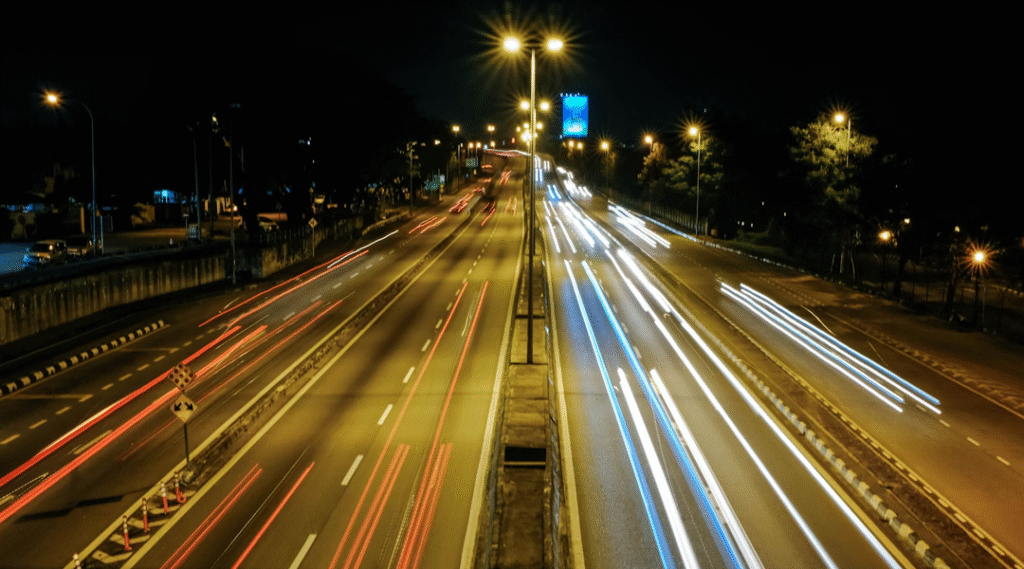As urban populations swell and vehicle ownership climbs, traditional traffic management systems strain under increasing demand. Smart traffic solutions—leveraging interconnected sensors, AI-driven analytics, and adaptive infrastructure—promise to transform gridlocked streets into fluid, efficient networks. Yet even as cities worldwide pilot intelligent traffic projects, challenges loom large. This article explores the tangible benefits smart traffic brings and unpacks the technical, social, and regulatory hurdles that must be overcome for widespread adoption.
1. Key Benefits of Smart Traffic
1.1 Congestion Reduction
- Adaptive Signal Control: Real‑time traffic data empowers traffic lights to adjust green phases dynamically, reducing idling time and smoothing flow at busy intersections. Cities report up to a 20–30% drop in average commute times.
- Predictive Routing: AI models forecast congestion hotspots before they materialize, enabling navigation apps and traffic control centers to redirect vehicles along less congested corridors.
1.2 Enhanced Safety
- Collision Prevention: Vehicle‑to‑infrastructure (V2I) alerts warn drivers of imminent red‑light violations or pedestrian crossings. Early pilots indicate up to a 15% reduction in intersection crashes.
- Incident Response: Automated detection of accidents or stalled vehicles via roadside cameras and sensors accelerates dispatch of emergency services, minimizing secondary collisions.
1.3 Environmental and Economic Gains
- Emissions Cuts: Smoother traffic flow reduces stop‑start driving, lowering fuel consumption and CO₂ emissions. Estimates suggest smart signals alone can cut urban emissions by 10–12%.
- Operational Savings: Cities spend less on traffic enforcement and maintenance when data‑driven insights pinpoint where upgrades are most needed, stretching limited budgets further.
1.4 Improved Public Transit Reliability
- Transit Signal Priority (TSP): Buses and trams equipped with connected transmitters can extend green lights in their favor, enhancing schedule adherence and encouraging ridership.
- Real‑Time Arrival Info: Integrated platforms feed live bus and train ETAs to passengers via apps and smart shelters, boosting public confidence in transit options.
2. Technical Roadblocks
2.1 Data Quality and Integration
- Sensor Reliability: Harsh weather, vandalism, and power outages can knock cameras or detectors offline, degrading system accuracy.
- Fragmented Systems: Many municipalities operate legacy traffic systems alongside newer platforms, leading to data silos that hinder holistic optimization.
2.2 Scalability and Interoperability
- Proprietary Standards: Vendors often use closed protocols, forcing cities to commit to single‑supplier ecosystems or invest heavily in middleware for interoperability.
- Bandwidth Constraints: High‑resolution video feeds and V2X communications demand robust, low‑latency networks—far beyond what many urban centers currently maintain.
2.3 Cybersecurity Concerns
- Attack Surface: Connected traffic infrastructure introduces new entry points for malicious actors. A successful hack could disable signals citywide or expose sensitive mobility data.
- Encryption and Authentication: Ensuring secure communication between vehicles, roadside units, and cloud services requires rigorous standards, yet many deployments lag best practices.
3. Social and Regulatory Challenges
3.1 Privacy and Data Ownership
- Surveillance Fears: Widespread camera networks and license‑plate recognition raise legitimate privacy concerns among citizens. Transparent policies on data collection, retention, and anonymization are essential.
- Ownership Disputes: When private firms build and manage smart traffic assets, questions arise over who controls the data and who profits from its monetization.
3.2 Funding and Political Will
- Upfront Costs: While smart traffic systems yield long‑term savings, initial investments in sensors, communications infrastructure, and analytics platforms can run into tens of millions for a midsize city. Securing budget approval often hinges on convincing stakeholders of ROI.
- Policy Fragmentation: Traffic policy is typically governed at the municipal or regional level, whereas vehicle regulations are national. Coordinating cross‑jurisdictional standards for V2X communications and data sharing can stall progress.
3.3 Equity and Accessibility
- Digital Divide: Low‑income neighborhoods may be deprioritized for smart traffic upgrades, perpetuating disparities in commute quality and safety.
- Accessibility for All: Ensuring that smart systems account for pedestrians, cyclists, and wheelchair users is vital. Technologies must be inclusive, not solely vehicle‑centric.
4. Strategies to Overcome Roadblocks
- Open Standards Adoption: Embrace global ITS standards (e.g., IEEE 802.11p for V2X, NTCIP for traffic controllers) to prevent vendor lock‑in and simplify system integration.
- Public‑Private Partnerships (P3): Leverage private capital and expertise while maintaining public oversight of data governance and performance metrics.
- Incremental Pilots: Start with corridor‑scale deployments to validate benefits, build public trust, and refine technical approaches before full‑city rollouts.
- Robust Cybersecurity Frameworks: Implement multi‑layer defenses—network segmentation, regular penetration testing, and secure boot processes—to safeguard infrastructure.
- Community Engagement: Host town halls and public workshops to address privacy worries, solicit feedback on prioritization, and ensure equitable distribution of smart traffic enhancements.
Final Thoughts
Smart traffic systems carry the promise of safer roads, cleaner air, and shorter commutes—but realizing these gains demands more than cutting‑edge tech. Cities must navigate a complex landscape of technical integration, privacy protection, budget constraints, and regulatory alignment. By adopting open standards, forging strategic partnerships, and keeping citizens at the heart of planning, municipalities can chart a path past today’s roadblocks toward an intelligent, inclusive mobility future.
All articles on this special edition-SMART TRAFFIC:
(#1) What Is Smart Traffic? A Complete Beginner’s Guide
(#2) The Technologies Behind Smart Traffic: From IoT to AI
(#3) Reimagining Urban Roads: Smart Infrastructure in Action
(#4) How AI and Big Data Are Revolutionizing Traffic Management
(#5) Smart Traffic Meets Autonomous Vehicles: A Symbiotic Future
(#6) Smart Traffic Benefits and the Roadblocks Ahead
(#7) Global Smart Traffic Projects: Key Takeaways for Urban Mobility
(#8) Who’s Leading the Smart Traffic Revolution?
(#9) The Future of Smart Traffic: Key Trends for 2025 and Beyond
(#10)Building Ethical, Legal, and Secure Smart Traffic Systems
As for in-depth insight articles about AI tech, please visit our AI Tech Category here.
As for in-depth insight articles about Auto Tech, please visit our Auto Tech Category here.
As for in-depth insight articles about Smart IoT, please visit our Smart IoT Category here.
As for in-depth insight articles about Energy, please visit our Energy Category here.
If you want to save time for high-quality reading, please visit our Editors’ Pick here.



